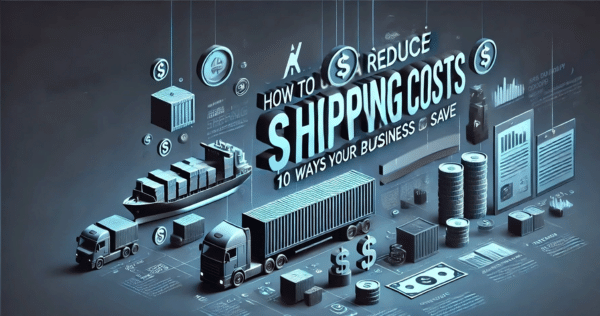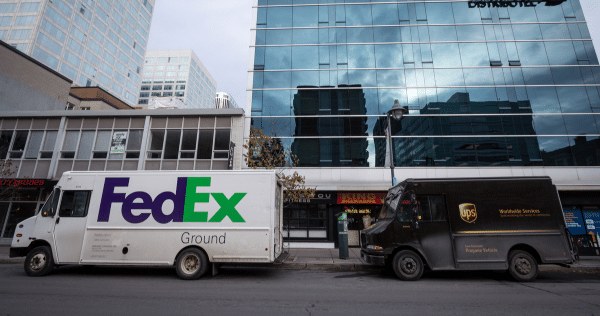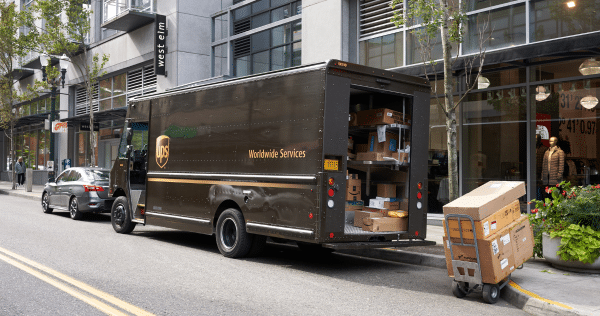Looking to learn how to reduce shipping costs? Shipping expenses can quickly add up, impacting your profits and increasing your bottom line.
In this article, we’ll share ten proven methods to help your business cut down on shipping costs. From optimizing packaging to taking advantage of discounts, these strategies will help you save money without compromising on service.
Key Takeaways
-
Negotiating better rates with carriers and leveraging shipping volume can significantly reduce shipping costs per shipment.
-
Optimizing package weight and dimensions, along with using carrier-provided packaging and other cost-effective materials, can lead to substantial savings on shipping expenses.
-
Regularly auditing shipments and staying informed about shipping rate changes ensures effective cost management, reduces overpayments, and identifies further savings opportunities.
1. Negotiate Better Rates with Shipping Carriers

Carriers generally have the most impact on your shipping costs, so negotiating better rates with them is a straightforward way to lower your spending. You can use shipping volume, carrier shopping, and service bundling to make your case for better terms.
Carriers often provide discounted rates for committing to a certain volume of shipments, allowing them to account for your needs in their resource planning and capacity. Higher shipping volumes generally result in lower rates, giving you leverage to negotiate and reduce per-shipment pricing.
During carrier contract negotiations, you can also shop multiple carriers to compare their prices and service levels using your shipping volume and current carrier contract as negotiation tools. Then, you can bring any better offers to your current carrier for price matching, switch carriers, or use multiple carriers for different shipping needs.
If you need additional storage or shipping assistance, consider bundling services like shipping and warehousing with carriers. This approach can lead to discounts and better pricing arrangements, saving money over time. However, it increases your reliance on the carrier, making it harder to switch later if rates become unfavorable.
Work With Third-Party Providers like Zero Down for Better Terms
Successful negotiation with carriers isn’t easy. They’re experts at securing favorable terms and maximizing their revenue, so you need to level the playing field with your own team of experts for the best rates.
At Zero Down, we help your business negotiate better terms, maximize savings, and prevent costly mistakes during negotiations.
For example, we worked with a client who was renegotiating their carrier contract to change payment methods. However, the new contract reduced their incentives and removed certain discounts, resulting in an 8% increase in shipping costs.
Fortunately, we found the discrepancy and helped negotiate better terms to save them thousands – and we can do the same for your company.
2. Optimize Package Weight and Dimensions
With shipping costs so closely tied to package weight and dimensions, effective package optimization is essential for lowering shipping fees.
Package optimization includes shrinking the overall size of your shipment by reducing the amount of wasted space in your packaging. You can use custom packaging solutions tailored to your items’ dimensions to reduce the need for additional protection or oversized boxes.
It’s also important to choose lightweight but strong materials to reduce the weight of each package, saving even more in shipping costs. Some examples include poly mailers, padded envelopes, corrugated cardboard, air pillows, or lightweight plastics for packages that need waterproofing.
Finally, ensure you’re reporting the proper dimensional weight and size on your shipments. If they’re billed at larger dimensions or a heavier weight, it can slowly bleed your profit margins.
3. Use Carrier-Provided Packaging
Utilizing carrier-provided packaging can result in significant cost savings. Many carriers offer free or discounted packaging options, potentially saving you up to 20% on shipping costs and avoiding dimensional fees.
Carrier-provided packaging includes boxes and envelopes in various sizes, allowing you to choose the most cost-effective option for each order. This flexibility reduces costs and helps avoid additional fees tied to using your packaging, especially when using free options.
4. Take Advantage of Discounted Shipping Supplies
Discounted or free shipping supplies are available from online marketplaces, wholesalers, local suppliers, and industry associations. Buying shipping supplies like boxes, bubble wrap, and poly mailers in bulk can lead to significant cost savings.
5. Implement Prepaid Shipping Options
Prepaid shipping labels provide discounts, make it easier to calculate shipping costs, and simplify shipping processes.
Major carriers, as well as certain ecommerce platforms, may offer discounted prepaid labels that can save you up to 20%, leading to significant cost savings for consistent shipment sizes and weights.
Prepaid shipping options can also make pricing more predictable, simplifying shipping charge calculations at checkout or helping you price flat-rate shipping options. Plus, prepaid shipping typically includes tracking services and insurance coverage, offering peace of mind for you and your customers.
However, make sure you’re shipping similarly-sized packages before buying prepaid labels in bulk. Otherwise, they won’t be as cost-effective.
6. Utilize Third-Party Insurance
Shipping problems aren’t extremely common, but they can greatly worsen the customer experience and affect your profitability when they do happen. Fortunately, shipping insurance helps reduce some of that risk.
Third-party insurance offers a cost-effective alternative to carrier-provided insurance. For example, carrier-provided insurance might cost $0.90 per $100 insured compared to third-party insurance at $0.55 per $100 insured. Over time, this difference can add up, especially for businesses with large volumes or high-value items.
For the best rates, compare different third-party insurance options against carrier insurance to find the best coverage for your needs and budget.
7. Explore Hybrid Shipping Services

Hybrid shipping services use multiple carriers to achieve cost savings. For example, you might start with UPS before transferring to USPS for last-mile delivery.
Leveraging the strengths of multiple carriers can cut shipping costs by up to 50% but often comes with slower delivery times. You’ll also have to meet specific conditions like volume, weight, and dimension restrictions to be eligible and maximize savings.
8. Audit Your Shipments
Regular shipment audits are essential for identifying cost-saving opportunities. Audits can uncover recovery overcharges, verify shipping dimensions, and ensure carriers provide the services you pay for.
With the right technology, audits also help identify cost-saving improvements like better route planning and alternate shipping speeds that can further minimize shipping costs. As a result, you’ll save money and ensure high-quality service at the same time.
9. Stay Updated on Shipping Rate Changes
Staying informed about changing shipping rates is important for managing shipping costs effectively. You should be aware of key events like the 2025 general rate increase that will impact your shipping costs going forward, increasing the need for shipping cost optimization.
As part of staying up to date, you should also regularly review shipping rates from various carriers to ensure you’re using the cheapest shipping method to lower shipping costs.
10. Know Your Delivery Zones
Shipping zones categorize geographical areas served by carriers, each with its own costs based on the distance from the distribution center. Typically, shipping costs increase with the zone number (and therefore distance), making it crucial to understand these designations for cost-effective shipping.
Using multiple fulfillment centers can minimize the average shipping zone number, reducing shipping costs by maintaining inventory closer to customer locations. It’s also great for improving delivery speed and reducing transportation costs.
Spend Less on Shipping With Our Best Practices
Reducing shipping costs is a multifaceted challenge that requires a strategic approach and an in-depth understanding of the shipping process. From negotiating better rates with carriers to optimizing package dimensions and auditing your shipments, there are many ways to bring down shipping expenses. Each strategy provides unique benefits, and by implementing a combination of these methods, you can greatly improve your bottom line.
If you’re looking for ways to further reduce your average shipping cost, reach out to the Zero Down team to learn more about our business intelligence, auditing, and carrier negotiation solutions.
Frequently Asked Questions
How can I negotiate better rates with shipping carriers?
To secure better rates with shipping carriers, negotiate with multiple carriers and leverage your shipping volumes while considering bundling services for added value.
What are some effective ways to optimize package weight and dimensions?
You can optimize package weight and dimensions by utilizing smaller packaging, custom solutions, and suitable packing materials to minimize empty space and reduce shipping costs.
Why should I use carrier-provided packaging?
Using carrier-provided packaging can significantly reduce shipping costs by up to 20%, preventing additional dimensional fees.
How can prepaid shipping options benefit my business?
Prepaid shipping options can significantly reduce costs, provide predictable shipping expenses, and streamline shipping processes.
What is the advantage of using third-party insurance for shipping?
Using third-party insurance for shipping can be more cost-effective than carrier options, often providing adequate coverage at a lower price, especially for high-value items.
Brad McBride, CEO and Founder of Zero Down Supply Chain Solutions is a dynamic leader with over 30 years of experience in the supply chain sector. His journey began at Consolidated Freightways in 1988, where he mastered freight logistics and pricing. His career led him to Eagle Global Logistics, diving into international freight forwarding and leading high-volume shipping projects.
Read More




